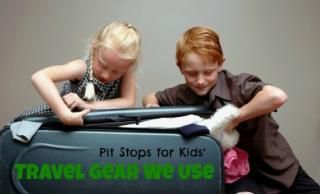There are only two ski resorts where kids can span two states while on the slopes, that we know of: Heavenly in Tahoe, which straddles Nevada and California, and Lookout Pass, which encompasses both Idaho and Montana. Skiing Lookout Pass is a friendly, low-stress affair: unlike large ski resorts, this hometown resort in Wallace, Idaho is very accessible, affordable, and welcoming.

Located in the Idaho panhandle near larger Silver Mountain Resort, Lookout Pass offers 540 acres and 34 named runs, with plenty for every ability level. The lodge is steps from the parking area, and everything is in one place, from ski lockers to dining to lift tickets and rentals…a nice perk for families with young kids. Lookout is very much a local mountain, but visitors to the area will find it to be a hidden gem, much like Oregon’s Hoodoo, situated near larger Mt. Bachelor. Consider these smaller resorts a ‘ski vacation travel hack’ that helps you save money and ski a more manageable mountain.

Right away, we loved how Lookout Pass is laid out: three main chairs rise from different slopes, all meeting at the top in one wide off-loading area. This means that various family members can separate to have very different terrain experiences, but still ‘meet at the top’. This top-side meeting area makes it next to impossible to miss meeting back up with your independent skiers. We have expert skiers in our family, and siblings like to ski together when possible without the grown-ups, which is definitely possible at Lookout.

The front, Idaho side of Lookout Pass offers a nice ‘face’ with moguls and long groomers. This is accessed from the base lodge via Chair 1. Chair 2 is located on the backside of the mountain, on the Montana side, and Chair 3 is located on what is called the ‘North’ side (I believe this is Idaho). This chair was not open during our visit, so we’re less familiar, but Chair 2 offers very nice long intermediate runs as well as great glade skiing. We spent most of our time here. There’s a fourth chair, which is the beginner/learning chair, and it’s located on the front side near the lodge.

A reminder about time zones: Just to keep in mind, when you’re skiing on the Montana side of the resort, you’ll be in Mountain time, and when on the Idaho side, in Pacific time. This can be confusing when people want to know what time to meet for lunch. In the lodge as well, families will find an ‘Idaho side’ and ‘Montana side’ for seating. One kid can sit in Idaho and another in Montana, and yes, this is as fun as it sounds!
Dining is fairly basic, cafeteria-style in the base lodge, and we found it to be perfectly adequate, if not sophisticated ski-day fare. We happily noshed on burgers and fries. Far too many fries, actually! Expect to pay approximately $6-8 an entree, plus additional for drinks. A pub is located upstairs, and we heard they have good food, but alas, it’s only available to those 21 and up.

Distance from the interstate:
Right off I-90, about 20 minutes from Kellogg and one hour from Coeur ‘d Alene.
Lift Tickets:
Tickets are reasonable at $40 for adults, $29 for kids 17 and under. Kids six and under are free. See full lift ticket pricing.
Directions:
Located at Exit 0 off I-90. From Kellogg or Spokane, it’s a scenic drive past several idyllic mining towns, including historic Wallace.
As we disclose whenever applicable, we experienced Lookout Pass as guests of the resort. All opinions are our own. (And all French fries were at our expense.)






























 A Better Life for Half the Price
A Better Life for Half the Price